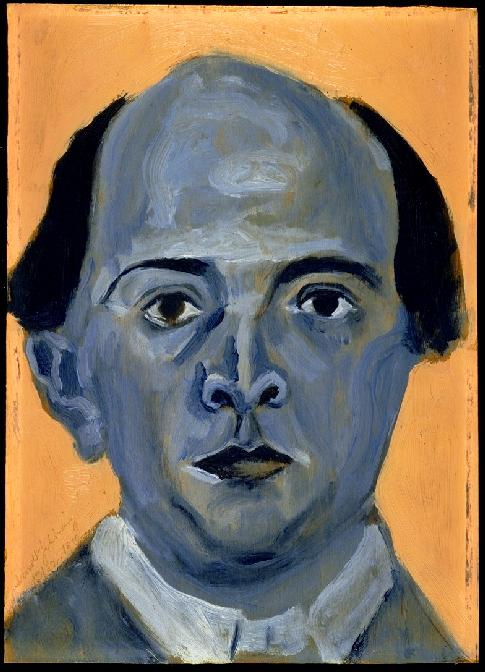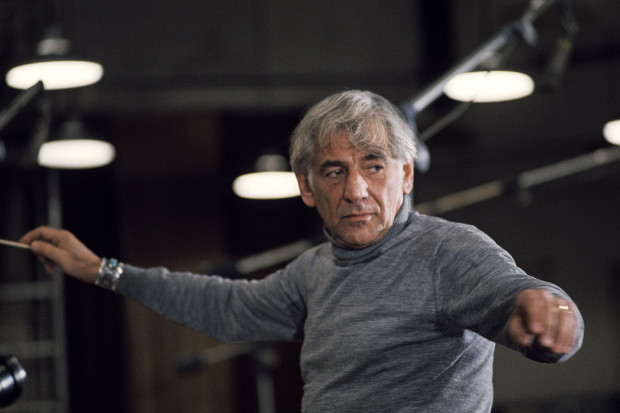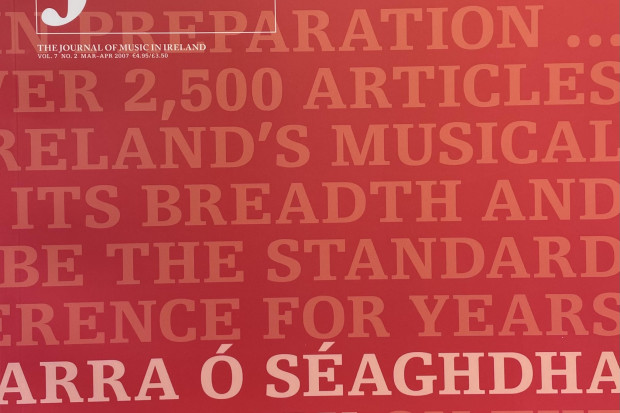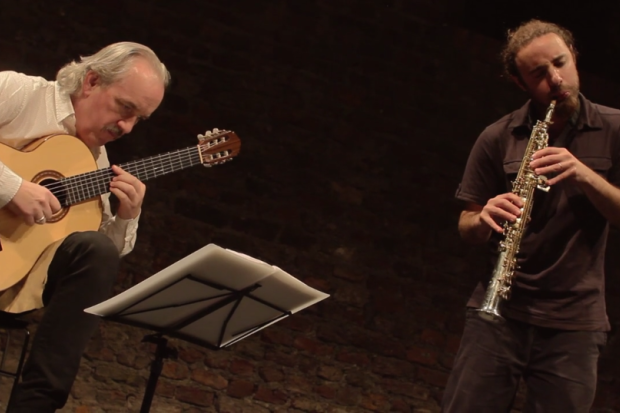
Must Schoenberg's Crisis be Ours Too?
Over the last decade or so, a few rather provocative books have appeared which examine the state of musical composition in the closing decades of the twentieth century. They do not seem as yet to have attracted much critical attention, but they are of interest and importance nonetheless. Moreover, one appreciates them for the refreshing contrast they provide to much current writing on the subject, which tends, on the whole, to be rather dull and unilluminating. Many studies of contemporary figures skirt the really interesting issues – such as the very vexed ones of evaluation and critical appraisal – altogether, their authors confining themselves instead to safe, non-committal descriptions of works and stylistic traits, unwilling to risk anything so dangerous as an opinion. In others, page after page is filled with endless laudatory comment, the commentator frequently appearing to have achieved little, if any, critical distance from the subject matter. No contemporary composer who is the object of such a study ever writes a poor piece or makes an artistic miscalculation, it seems.
This hagiographical tendency is particularly in evidence in studies of figures prominent in the avant-garde of the 1950s and 1960s, such as Stockhausen, Boulez or Cage. The views of these composers on the subjects of the current state of our musical culture or on composing, no matter how questionable, no matter how dubious or patently flawed, are, one infers, to be regarded reverentially as oracular pronouncements that must be granted immunity from any critical examination.
One of the most thought provoking of these books that cast a quizzical or sceptical eye on the developments of recent years is a slim volume entitled Reviving the Muse: Essays on Music After Modernism, which was brought out a few years ago.[1] The contributors to this collection include composers such as Robin Holloway, David Matthews and John Borstlap, the philosopher Roger Scruton, and a number of other distinguished figures active in a variety of capacities – journalism, concert promotion, education – in musical life in England and on the Continent. From their various professional vantage points, they offer their views on aspects of contemporary musical life. Most of the essays, however, deal specifically with composition today and its place in the wider context of our musical culture as a whole.
Unlike the non-committal or gushing commentators I have just described, many of the contributors to this volume communicate a sense of frank disappointment and, in some cases, concern and disquiet with the state of affairs they perceive to prevail. Their individual reactions and the reasons they adduce in support of their views may vary considerably, but on one matter they are all in substantial agreement: that contemporary composition is in a state of crisis and that a radical reassessment of our understandings of the act of composing and its place in our culture is a matter of some urgency if our musical life if to thrive once more.
Some readers might be inclined to dismiss such a pessimistic diagnosis, suspecting that views like these might merely be expressive of the jaundiced perspectives of a group of arch-conservatives unsympathetic to any manifestation of musical modernity. I doubt, however, if any reader of the book who is prepared to engage in a genuinely dispassionate spirit with the views expressed here could arrive at such a conclusion. For one thing, the sincerity of tone of the various contributions is immediately apparent. And even if one cannot necessarily accept all of the positions advanced, they have evidently been thought out with care. There is no question either that any of the contributors indulges in glib condemnation, or wishes to restrict individual artistic freedoms in any way.
What support do they offer for their views? Some of them point, first of all, to the marginal position that contemporary music continues to occupy in our musical life. Despite state funding, despite powerful advocacy on the part of sympathetically disposed critics and academics, despite modern techniques of promotion and publicity, interest in contemporary music is still confined to a tiny elite. Moreover, compositional activity of this kind is largely buoyed up by arts council funding or the support of third-level institutions. Audiences remain, on the whole, unenthusiastic and this music seldom seems to arouse wider interest.
A number of explanations have traditionally been advanced to account for this indifference on the part of the listening public. It is claimed, for example, that the merits of complex new music can take a very long time to be appreciated. But this is at best only partially true. Members of the audience at the first performance of Wagner’s Ring cycle may not have assimilated immediately the subtleties of this vast work in all its manifold complexities of detail and organisation, but they seem, nonetheless, to have found the operas compelling and responded enthusiastically to their imaginative power, despite the fact that they were deemed the ne plus ultra of difficult modernism in their day. By comparison, much music by even classic figures in twentieth century modernism, such as Schoenberg, has failed to enter the standard repertoire – and this in spite of their prominence in every textbook of music history and the fact that traditions of sympathetic exposition and commentary on their music have been established for half a century and more.
The authors of these essays also tend to reject the second explanation that is traditionally advanced to account for this state of affairs and which was presented in its most aggressive formulation by Adorno: that the taste of most audiences is irredeemably debased and they prefer what Adorno describes in his characteristically sweeping and dismissive fashion as the sentimental and saccharine clichés deriving from traditional tonal music. In his view, this reflects the collective psychological state of a society brutalised by the corrupting forces of modern capitalism and in danger, if not actually in the process, of reverting altogether to barbarism.
Such an explanation is, to say the very least, highly questionable. For one thing, we tend to regard analyses such as this with suspicion nowadays, belonging as it does to a tradition of apocalyptic prognostication in the grand manner that includes the writings of Spengler and Nietzsche. Complex social and cultural phenomena in real life always seem to defy being accounted for by all-embracing explanations of this kind, which subsume everything neatly under a few simple formulae. But leaving this aside, many readers of Adorno also feel uncomfortable with his unmistakable attitude of contempt for what he perceives as the public’s low general level of intelligence and taste. Are most audience members really as wilfully self-deceiving, as close-minded as he suggests and for the reasons he proposes, one wonders? Or could it just be that the reason for the failure of this music to arouse their enthusiasm lies instead with the music itself? Surely not every piece of contemporary music is an immortal masterpiece?
Several of the contributors to this book not only have difficulty in accepting the validity of Adorno’s position, but also entertain deeper doubts about the entire modernist enterprise of which he was such an impassioned advocate. Some of the most interesting essays in the book are in fact devoted to a critical reassessment of certain central tenets of high modernism, in particular, that strand of it which originated with Schoenberg and was subsequently elaborated by figures such as Adorno and Boulez, and which insisted on the necessity of rejecting tonality. As every music student knows, one strand of this movement has its origins in Wagner’s Tristan, where Wagner employs a dense chromaticism to depict emotional states of the utmost intensity and extremity. In his early works, Schoenberg explored the expressive possibilities afforded by this yet further, evolving a harmonic idiom in which any sense of a stable tonal centre was greatly attenuated. Eventually, he underwent a profound personal and artistic crisis, during which he became convinced that the resources of the traditional tonal vocabulary were exhausted and that the abandonment of tonality was now an inescapable necessity.
Although these contentions had momentous consequences for the subsequent development of Western music, they have never really been subjected to a really searching critical appraisal. Rather, this phase of Schoenberg’s personal development as an artist, as well as his later ‘discovery’ of serialism have been consistently mythologised, a process that originated with the composer’s own accounts of these events. Schoenberg, like Freud, presented himself in heroic mould when describing his intellectual development: both wished to be perceived as innovators of fearless integrity, pursuing their discoveries uncompromisingly in the face of malice, hostility and persecution. While both figures were undoubtedly men of considerable moral courage, there are of course elements of self-idealisation and dramatisation in any self-portrait like this. Later commentators, however, took their cue from the masters themselves and adopted these idealised self-portraits uncritically as starting points for biographies and for critical exegesis. They also applied themselves to the task of disseminating the doctrines of these figures with what can only be described as an evangelical fervour, as if they were eternal and immutable truths which are above criticism.
The parallels between the development of the psychoanalytic movement and that aspect of musical modernism which originated with Schoenberg are, in fact, rather striking. Both schools had their origins in a personal crisis of their founders, during which they claimed to have arrived at discoveries which were of the greatest consequence for their respective disciplines. Their ‘discoveries’ were elaborated subsequently into systems of quasi-religious belief which were stoutly defended by a loyal coterie of disciples against criticism or dissent. The history of the psychoanalytic movement after 1910 is notorious for its internal schisms, in-fighting, defections arising over contentious doctrinal issues and wholesale condemnations of rival schools of psychotherapy. Similarly, the modernist school deriving from Schoenberg, almost from its inception, has been notable for its aggressive and strident polemics, as well as for stylistic anathematisations and sweeping dismissals of composers who do not write in conformity with the orthodoxy its adherents espouse.
Schoenberg’s development as an artist has also been consistently dramatised in another significant way. From the outset, Schoenberg’s abandonment of tonality was presented as an event of the utmost historical importance. There was no question that the stylistic consequences of his personal crisis were a comparatively private affair, of relevance to the artist alone. Quite the contrary: Schoenberg undoubtedly felt his innovations would earn him a hallowed place in musical history – his declaration that serialism would ensure the hegemony of German music for a hundred years provides unambiguous testimony to the fact. Almost from the outset, his personal stylistic development was held to have momentous implications for the practice of other composers, rendering much of what they wrote invalid. Schoenberg’s innovations were widely held to be the logical culmination of a process of historical development which led ineluctably to the abandonment of tonality and the only viable musical future to lie with developments along the lines he had explored.
This is, of course, a biographical narrative constructed in the grandest Hegelian manner, the drama of a world-historical personage whose exalted destiny it is to make manifest the latest phase of the World Spirit’s continuing self-actualisation in affairs of musical culture. (One wonders to what extent Schoenberg’s Moses in his unfinished opera is a self-portrait: the prophet selected for the arduous task of leading the chosen musical people out of artistic thraldom into the promised land of serialism, defending them from false musical gods along the way.)
This account of events was to be given a very important twist by later commentators: it was claimed with ever-increasing insistence that the adoption of atonality was not only a historical imperative, but also a moral one.[2] A failure to abandon tonality was interpreted by commentators such as Adorno to be a dereliction of artistic duty. Music, Adorno argues, should function as an agency to awaken moral insight. The modern composer should seek to confront his audiences, to rouse them from their state of false consciousness. Their expectations of hearing soothing tonal platitudes should be foiled. For this, the adoption of a aggressively dissonant musical idiom that eschewed tonal references was indispensable. The association of atonal music with a position of superior moral and ideological probity, which had long been implicit, was now made explicit.
This idea was a commonplace of much aesthetic debate after the Second World War, and although its influence has now waned very considerably, it has by no means passed altogether. A satisfactory account of why this notion was so influential still remains to be written. Arguments from history for the inescapable necessity of writing atonally are very difficult to accept now. Isaiah Berlin and Karl Popper have presented us with trenchant critiques of so-called historicist interpretations of history, which construe patterns of historical events to arise with an inexorable logic from the interplay of mysterious ‘historical forces’. The relevance of their critiques to the question in hand is immediately evident. The path that Schoenberg took was not inevitable and predestined: he made a personal choice as an artist, one of many other possible choices open to him. Nor should we accept without question that he attained to a position of greater ethical or artistic superiority by doing so. To assert that atonality and serialism are the only viable modes of artistic expression to arise logically from the music of the past and to argue that they rendered all other styles historically redundant or morally suspect is simply to persist in the sort of mythologising I have already described. This may all seem obvious enough at this temporal remove, but this very obviousness makes the widespread acceptance of this idea appear all the more elusive and strange a phenomenon.
One other important element in the development of this strand of the modernist aesthetic remains to be mentioned: that is Schoenberg’s claim in Style and Idea that an atonal idiom was capable of portraying the entire gamut of human emotions, not just the distressing ones. We have already mentioned how atonality arose from a use of chromaticism to depict extreme psychological and emotional tension. In works of Schoenberg’s Expressionist period such as Erwartung, this idiom is deployed admirably to depict states of mind bordering on the psychopathological. This practice was perfectly consistent with a long tradition of employing extreme dissonance to dramatise suffering and despair – a tradition which goes back at least as far as the Renaissance. Schoenberg asserted that dissonance could be stripped of all its traditional emotional significations and the harmonic idiom of atonality established as an expressive norm. It is of course highly questionable indeed if we can divest ourselves of traditional ways of hearing quite so easily. Interestingly, the circle of composers associated with Darmstadt in the decades following the Second World War were to attempt such a nullification of tradition again, but in an even more extreme way.
As with orthodox Freudianism, this strand of high modernism has not lacked for critics. Many composers had genuine reservations about the expressive limitations that atonality imposed, Schoenberg’s strictures notwithstanding, not to mention those imposed by the later developments of serialism and integral serialism. Others felt uncomfortable with the atmosphere of doctrinaire intolerance that surrounded this movement from the beginning. From the 1970s onwards, the tenets of high musical modernism have come to be perceived as excessively authoritarian and inhibiting, incompatible with our present ideals of pluralism and tolerance of stylistic diversity.
As some of the contributors to this book point out, while the perspectives of post-modernism have resulted in a welcome relaxation of stylistic conflicts, post-modernist aesthetics are inherently problematic. In a pluralist aesthetic, there can be no hierarchy of merit amongst competing styles, all of which now have strictly equal claims to importance. As a result, we live in a time when a deep confusion appears to reign concerning fundamental questions of intrinsic artistic value. Almost anything, it seems, since John Cage, can be considered to be music. Traditional considerations of craft and expressivity are thus rendered meaningless and irrelevant. More disturbingly, the question of intrinsic worth appears to be decided only on the basis of sales, profit and advertising. And for some of the contributors, much of the music they hear simply does not convince them, consisting of what they hear as collages of tired modernist gestures, which at this point have themselves become clichés.
The commentators in this book suggest a variety of ways to transcend this frustrating condition. Obviously, there is no easy answer to the predicament they describe. On finishing the book, it struck me with some force that the crisis precipitated by the collapse of modernism and the prevailing confusion engendered by an incoherent and internally contradictory post-modernist aesthetic have value in so far as they force composers, performers and commentators into a thorough critical reconsideration of the roots of their activity.
Two very valuable areas of intellectual enquiry which have received scant attention up to now could assist us greatly in reorienting ourselves. The first would be a historical study of ideas about composing and the place of the composer in society. One strand of this would begin with a survey of beliefs about music in ancient Greece and the Greek educational system of paideia which explicitly linked musical training to man’s moral development and emphasised the ethical dimensions of art. Thus begins a tradition stretching from Plato through Boethius to baroque theorists such as Matthesohn and the aesthetic writings of the philosophes of the French Enlightenment. This idea undergoes further development during the Romantic era in the writings of Wagner and finds fresh expression in commentators such as Adorno. Another strand would explore the understanding of the artist which envisions him as conveying transcendent truths in his art – a tradition which begins once more with the Greeks, but was dramatically reformulated in the writings of German Romantics such as Wackenroder, Tieck and Novalis and, later, by Schopenhauer. A study of historicist understandings of the artist would belong here. Yet other strands could sketch the rise of the notions that the relationship between the artist and society should be intrinsically confrontational, or that art should always be the handmaiden of ideology. There are of course many other possible areas for exploration, but these, I would suggest, could be particularly fruitful.
The second enterprise would be to attempt a critical reconsideration of all of these various ideas – a sympathetic one, if possible, but more importantly, a searching one. One of the gravest flaws in a pluralist aesthetics is that commentators tend to refrain from criticism of the various aesthetic positions advanced, even if they find them deeply flawed and questionable. This no doubt accounts for the insipidity and lack of intellectual penetration in a great deal of writing on contemporary music and the sense of sterility and stasis in postmodernist aesthetic debates. If there is one lesson we have learned from the passing of modernism, it is that no prevailing orthodoxy should be deemed to be immune from criticism – intellectually responsible and cogent criticism, of course, for no other kind is really worthwhile. An undertaking of this kind, could, I believe, be richly rewarding and offer many illuminating insights, assisting us to appreciate more deeply those traditional understandings of the function of art which have enduring value, but helping us also to discard those which are inhibiting of fresh and genuine creativity, in whatever stylistic guise it might appear.
This essay is a version of a talk given at the Mostly Modern Open Day and Lecture Series on 30th October 2003. The Lecture Series was organised in association with JMI to mark the journal’s third birthday.
Notes
1. Peter Davison (ed.), Reviving the Muse: Essays on Music After Modernism, Claridge Press, 2000.
2. I have described elsewhere how this belief is a commonplace of much later writing on twentieth century music in my article ‘Our Songs are Our Laws: Music and the Republic’, the first part of which has just appeared in The Republic.
Published on 1 November 2003














